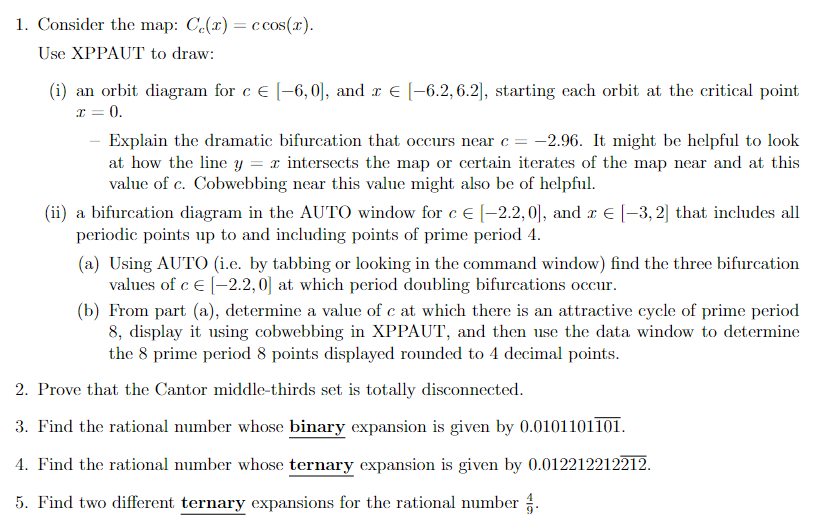Answered step by step
Verified Expert Solution
Question
1 Approved Answer
1. Consider the map: Ce(x) = ccos(x). Use XPPAUT to draw: (i) an orbit diagram for c [6,0], and x = [6.2, 6.2], starting

1. Consider the map: Ce(x) = ccos(x). Use XPPAUT to draw: (i) an orbit diagram for c [6,0], and x = [6.2, 6.2], starting each orbit at the critical point x = 0. - Explain the dramatic bifurcation that occurs near c = -2.96. It might be helpful to look at how the line y = x intersects the map or certain iterates of the map near and at this value of c. Cobwebbing near this value might also be of helpful. (ii) a bifurcation diagram in the AUTO window for c [-2.2,0], and x [-3,2] that includes all periodic points up to and including points of prime period 4. (a) Using AUTO (i.e. by tabbing or looking in the command window) find the three bifurcation values of c -2.2,0] at which period doubling bifurcations occur. (b) From part (a), determine a value of c at which there is an attractive cycle of prime period 8, display it using cobwebbing in XPPAUT, and then use the data window to determine the 8 prime period 8 points displayed rounded to 4 decimal points. 2. Prove that the Cantor middle-thirds set is totally disconnected. 3. Find the rational number whose binary expansion is given by 0.0101101101. 4. Find the rational number whose ternary expansion is given by 0.012212212212. 5. Find two different ternary expansions for the rational number.
Step by Step Solution
There are 3 Steps involved in it
Step: 1

Get Instant Access to Expert-Tailored Solutions
See step-by-step solutions with expert insights and AI powered tools for academic success
Step: 2

Step: 3

Ace Your Homework with AI
Get the answers you need in no time with our AI-driven, step-by-step assistance
Get Started


